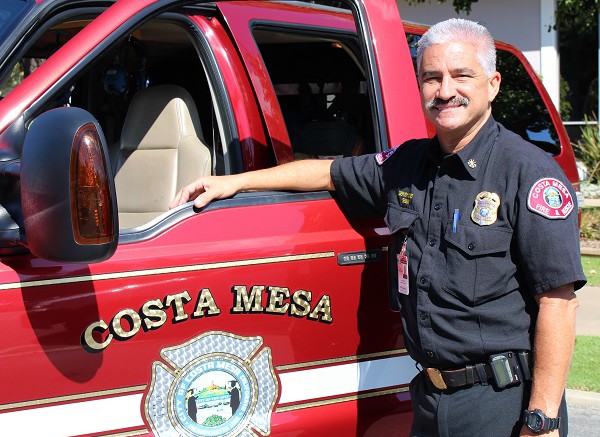When Deputy Fire Chief Fred Seguin graduated in 1978 from Canyon High, the fire service wasn’t exactly a burning desire for him as a career choice.
Instead, he was moving up the ranks of the grocery business, where he first started as a box boy.
“I was working 40 to 50 hours a week,” he said. “I was young, living at home and the money was good.”
But while he was there, he attended Santa Ana College and took an introduction to fire science course that sparked a lifelong career move that after 30 years is drawing to a close as he plans to retire from the Costa Mesa Fire and Rescue Department on Oct. 14.
“It seems like a long time but it also seems like yesterday when I was sleeping outside of agencies to apply for one job,” said Seguin, who landed his post in Costa Mesa in 1985.
Firefighters are used to moving up the ladders quickly, and Seguin did just that, promoting to fire engineer in 1989 and fire captain in 1997. He became battalion chief in 2011 and ran the department for a short time in between fire chiefs until Chief Dan Stefano came aboard in October of 2013.
“It’s been a memorable career,” Seguin said. “When I wrote my retirement letter it was tough. I am walking away from a career that is so rewarding but so difficult to explain to people. To walk away from something you cherish so much is hard.”
So why do it?
Seguin said to stay on the job and not allow someone else the opportunity to put in 30 years into a career that is so rewarding would be selfish.
“I am happy, but I am not selfish,” he said.
While on the job he’s met movie stars and congressmen, helped with security for President Obama’s visit to fairgrounds, and one of his best memories was meeting Dodger announcer Vin Scully.
He’s especially proud that his fellow firefighters appreciate his work.
“Being selected by my peers to be firefighter of the year not once but twice, that is amazing,” he said.
During Seguin’s career, the department grew from four stations to six over a 30-year span.
The big thing, Seguin said, is the fire service in general has changed. Instead of having two small paramedic units citywide, there are paramedic units at five of the city’s six stations.
And while fires are sporadic and not as large a focus as the past, they still happen and the department now must combat fires from a different perspective.
“Firefighting has truly evolved into an art, it’s a specialty,” he said.
For proof, he pointed to photo on his wall of an old, simple-looking firetruck with very few amenities.
“Fires were that easy back then,” he said. “Now our rigs are so big because we carry so much on them.”



